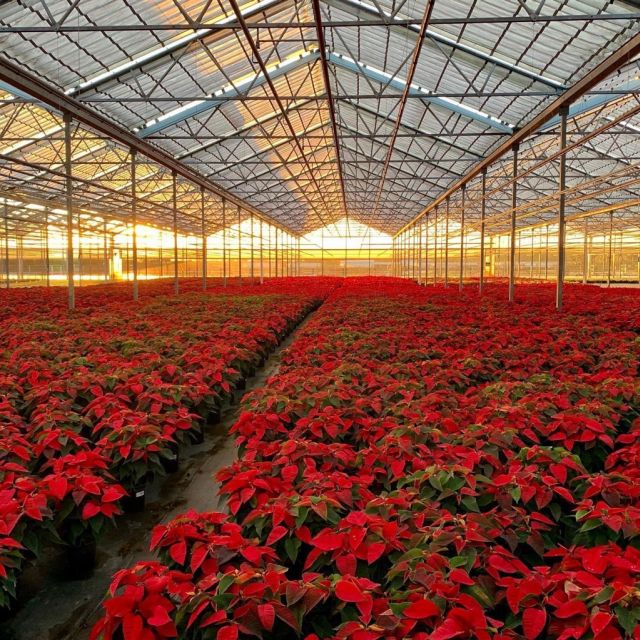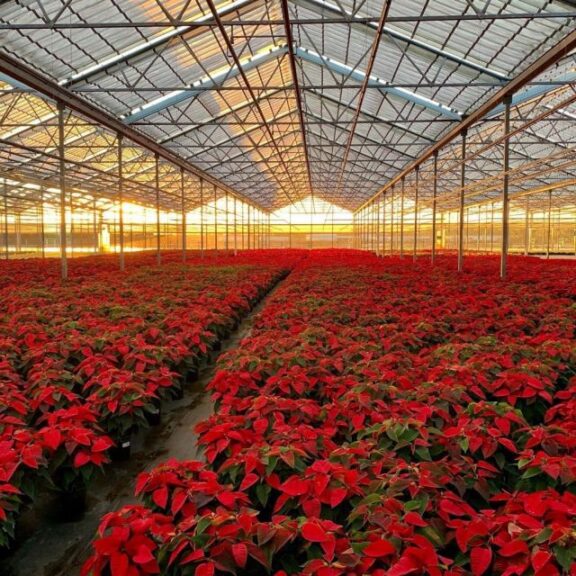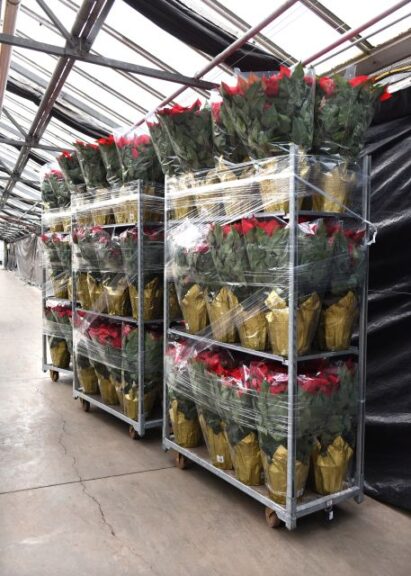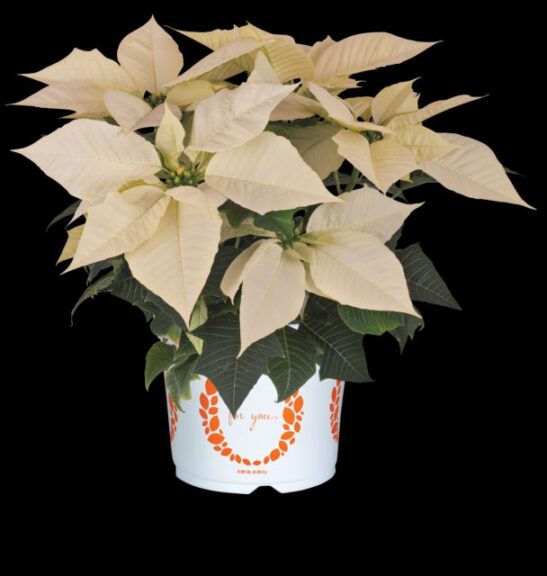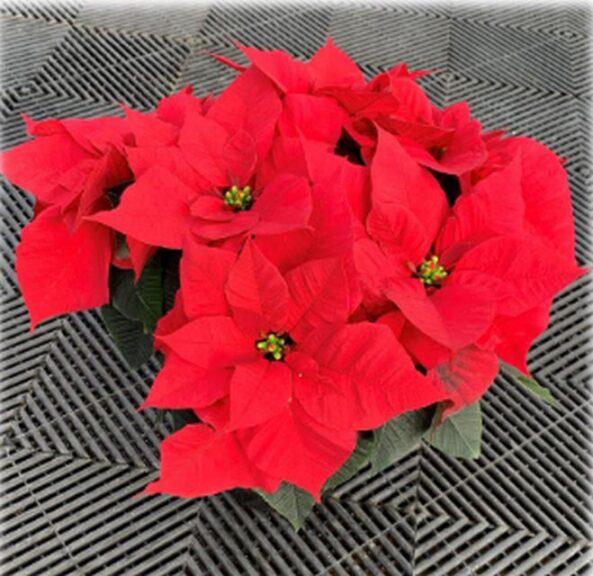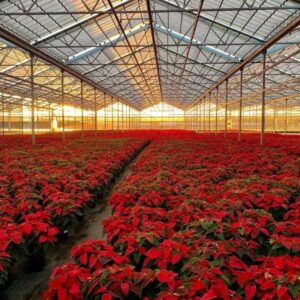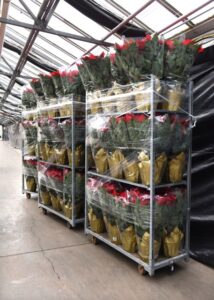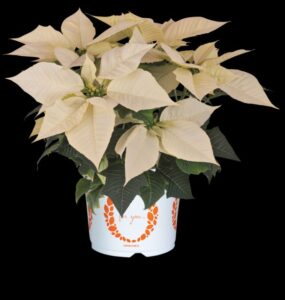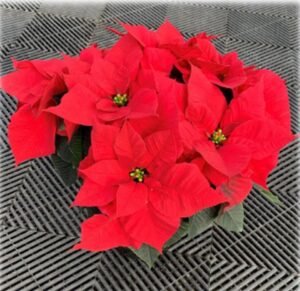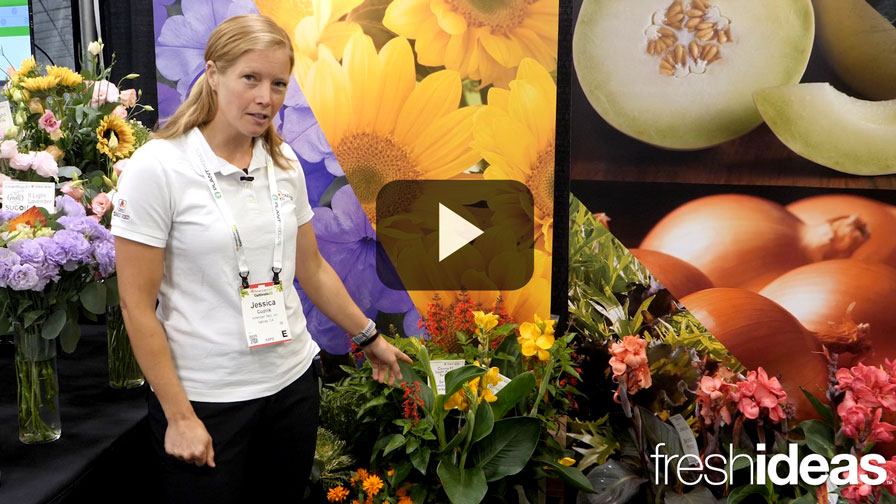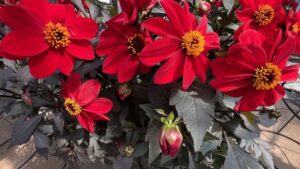How to Meet Retail Specs for Poinsettias
Every grower knows the importance of meeting retailer specifications. If crops are delivered that are too tall, too short, or don’t have enough blooms, a retailer could reject the load, leading to a significant profit loss for the grower. Poinsettias can be especially challenging, due to their tropical nature and long crop time.
Mike Gooder, Owner and CEO of Plantpeddler in Cresco, IA, shares some of his best practices with poinsettias. The first step in meeting retail specs, he says, is to identify the customer and understand their needs.
“If you do everything right in advance, then you’re not chasing that spec at the end and doing something dramatic like an application of a growth hormone,” Gooder says. “If it’s a plant growth regulator (PGR) that stops growth, you can stunt bract size. If you use something like a gibberellic acid compound like Fascination, you can get the opposite effect and it affects quality the other way with de-stacked bracts.”
The second step is to choose a variety that is suited for the specs you are trying to meet, says Stacy Bryant, Sales Manager at Plantpeddler. Gooder says this is one of the advantages of modern plant breeding — there are varieties for every slot.
“If you’re trying to hit a 5-inch pot big box spec, you’re probably going to pick a low vigor variety,” Bryant says. “If it’s for a Black Friday sale, you’re also going to choose an early-flowering variety.”
Graphical Tracking and DIF
Graphical tracking is a key tool in managing retail specs for poinsettias. The goal is for growers to plot the height of their crop on the graph once a week and make decisions based on how the crop is doing in relation to the desired height.
Gooder says that the Plantpeddler team sets minimum and maximum heights, which appear as bold, parallel lines on the graph. The height data points should be plotted between those two lines. Temperature can be used to manipulate plant height.
“You’d want a positive DIF (difference between daytime and nighttime temperature) if you’re trying to get height, meaning a warmer day and cooler night. You’d flip it if you’re trying to hold that poinsettia down. A negative DIF will help suppress growth,” Gooder says. “You measure weekly, plot graphs, and see if you’re staying near your target. Push with temperature or hold by cooling to stay within the lines of that graphical track.”
Gooder says growers often end up under spec by coasting through the fall with as little heat as possible. Heat during initiation is important to build the base of the plant. If growers shortchange themselves in the beginning and try to hold back on heat, they have to push with heat late in the season when it’s more expensive and it’s colder outside.
“Temperature manipulation — whether a positive DIF to stretch a crop early in production or a negative DIF/morning dip to control height — can be utilized while growing the crop to achieve the desired specs,” says James Doukas, Territory Manager for Northeast and Great Lakes for Selecta One. “PGR applications and fertilizer selections provide the grower a chance to fine tune their desired growth based on the growing environment provided.”
Rebecca Siemonsma, Head of Product Management for North America at Dümmen Orange, says the vegetative growth phase between pinch and flower initiation basically determines final finished height. A shorter phase equals shorter finished height, versus a longer phase which results in more vegetative growth. She says growers can adjust planting dates and pinching in proximity to flower initiation to adjust height.
“In poinsettia production, following an exact schedule is a must for on-time finishing,” says Mike Fernandez, Market Manager for Danziger North America. “Tracking the crop so that you know when and when not to use PGRs will help to assure you hit your targets and deliver a saleable finished plant.”
Gooder also says breeders are trending toward early-flushing, late-flowering varieties of poinsettias. The bracts come out early but the cyathia do not flower until later, giving growers more flexibility in their shipping schedule.
“Another big negative that retailers look for is cyathia drop. They want to see bright, yellow cyathia in the middle of those flowers,” Gooder says. “If they drop the cyathia because the plant is overly mature, you could get a deduct or a rejection.”
How to Boost Retail Appearance
Varieties that are early to color and late to shed pollen provide additional weeks of life for the consumer and opportunity to sell at retail, Doukas says.
“Cold finishing and holding can tone plants to survive the stresses of sleeving, shipping, and display prior to being featured in someone’s home or business,” he says. “Once plants have reached their desired color, a grower could also apply a 1ppm Bonzi spray to enhance the shelf-life of cyathia. But be aware: Only apply after complete color has been achieved because after application color will not advance.”
Siemonsma says elevated electrical conductivity (EC) can burn the roots if poinsettias are allowed to dry down in retail stores. She says growers can minimize this risk by reducing fertility rates in finishing, which in turn will lower the EC in the media. Weekly calcium sprays of 200-400 ppm lab or reagent grade calcium chloride applied as a light, low pressure mist can prevent bract edge burn.
There are various opportunities to prepare for a successful growing season. With these tips from growers and breeders, growers should be on track to meet poinsettia retail specs this winter.




